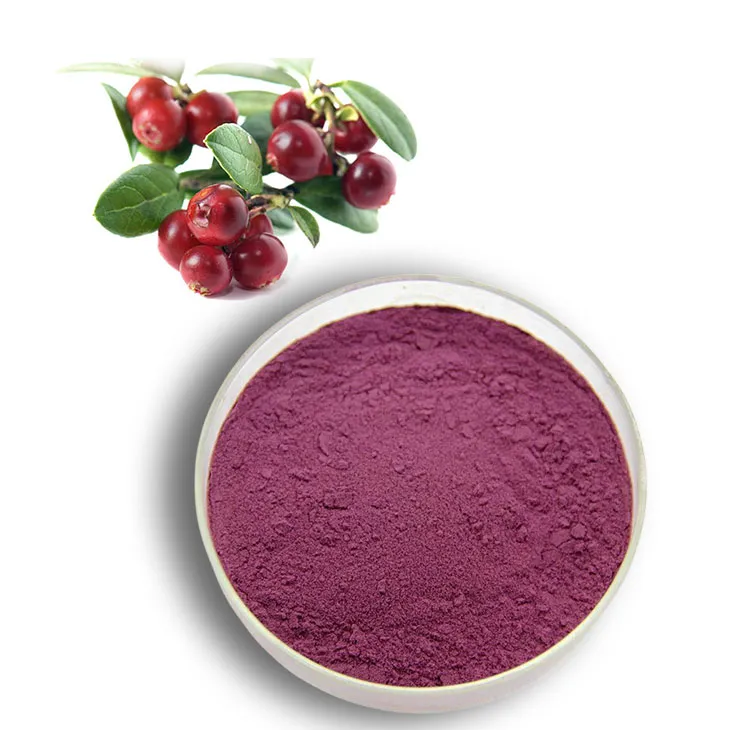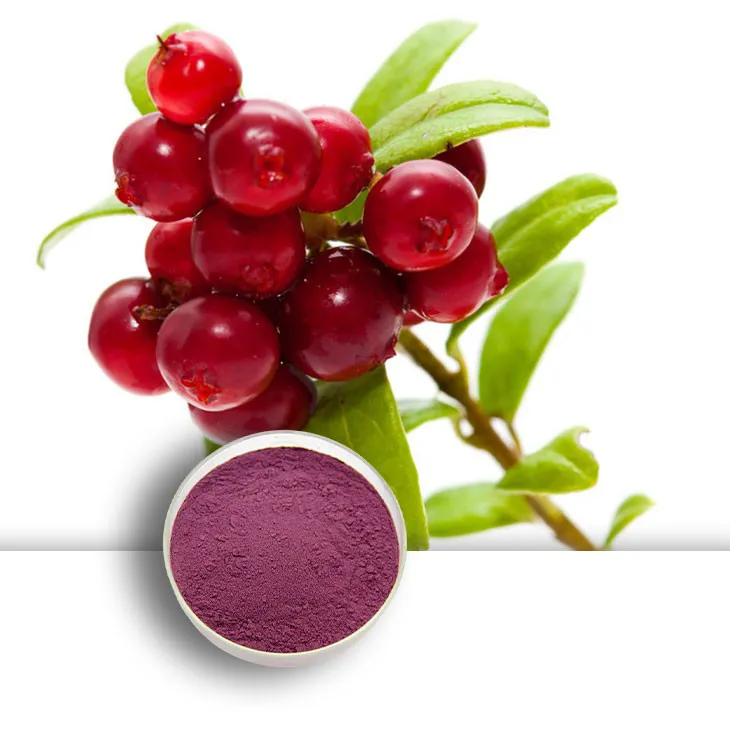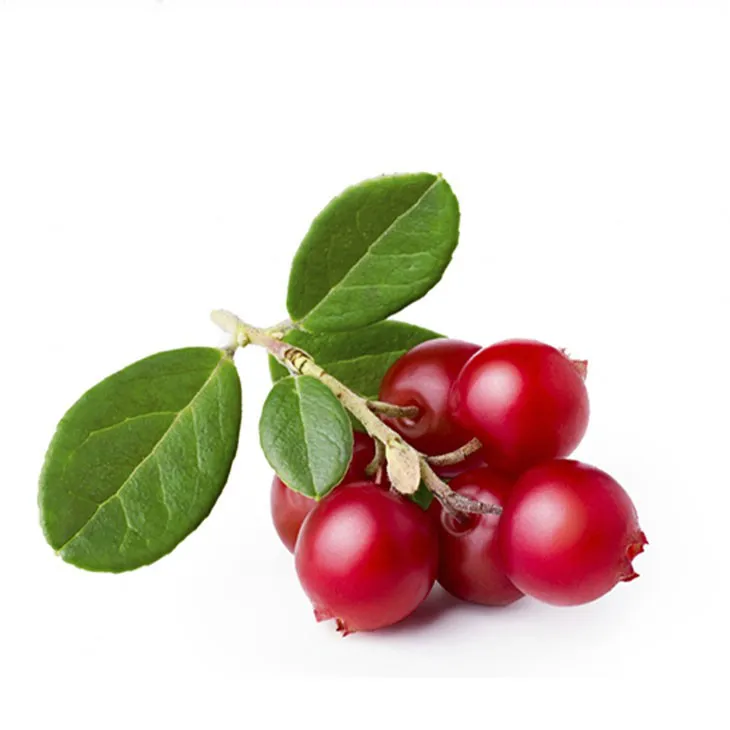- 0086-571-85302990
- sales@greenskybio.com
The process of extracting malvidin - 3 - galactoside from bilberry extract.
2024-11-28

1. Introduction
Bilberries are small, blue - black berries that have been recognized for their numerous health benefits. They are rich in various bioactive compounds, among which Malvidin - 3 - galactoside is of particular interest. Malvidin - 3 - galactoside is a type of anthocyanin, which has antioxidant, anti - inflammatory, and potential anti - cancer properties. Extracting Malvidin - 3 - galactoside from Bilberry Extract is a complex but important process, as it enables the isolation of this valuable compound for use in the health, food, and nutraceutical industries.

2. Preparation of Bilberry Extract
2.1 Harvesting bilberries
The first step in obtaining Bilberry Extract is to harvest the bilberries. Bilberries are typically wild - harvested, although some cultivation also occurs. The timing of the harvest is crucial, as it affects the content and quality of the bioactive compounds in the berries. Bilberries are usually harvested when they are fully ripe, which is indicated by their deep blue - black color.
2.2 Sorting and cleaning
Once harvested, the bilberries need to be sorted and cleaned. This involves removing any damaged, unripe, or foreign matter from the berries. Sorting can be done manually or using mechanical sorting devices. Cleaning is usually achieved by washing the berries gently with water to remove dirt, debris, and any surface contaminants.
2.3 Crushing
After sorting and cleaning, the bilberries are crushed. Crushing is an important step as it breaks down the cell walls of the berries, making the bioactive compounds more accessible for extraction. The crushing process can be carried out using a variety of methods, such as mechanical presses or homogenizers. Mechanical presses apply pressure to the bilberries to extract the juice, while homogenizers use high - speed rotation to break down the berries into a pulp.
2.4 Solvent soaking
Following crushing, the bilberries are soaked in a solvent. The choice of solvent is crucial, as it affects the extraction efficiency and the quality of the extract. Commonly used solvents for bilberry extraction include water, ethanol, and mixtures of water and ethanol. Solvent soaking helps to dissolve the bioactive compounds, including Malvidin - 3 - galactoside, from the bilberry pulp. The soaking time and temperature also play important roles in the extraction process. Longer soaking times and higher temperatures generally result in higher extraction yields, but may also lead to the degradation of some bioactive compounds.

3. Extraction of Malvidin - 3 - galactoside
3.1 Liquid - liquid extraction (small - scale)
For small - scale extraction of Malvidin - 3 - galactoside from bilberry extract, liquid - liquid extraction can be an effective method. In this process, the bilberry extract (usually in an aqueous or ethanolic solution) is mixed with a second solvent that is immiscible with the first. Commonly used immiscible solvent pairs for liquid - liquid extraction include water - ethyl acetate or water - dichloromethane. The two solvents are vigorously mixed, allowing the Malvidin - 3 - galactoside to partition between the two phases. After mixing, the two phases are allowed to separate, and the phase containing the Malvidin - 3 - galactoside is collected. This method is relatively simple and can be carried out in a laboratory setting using basic glassware such as separatory funnels.
3.2 Continuous extraction systems (large - scale)
On a larger scale, continuous extraction systems are more suitable for extracting Malvidin - 3 - galactoside from bilberry extract. These systems are designed to handle larger volumes of raw material and can operate continuously, increasing the efficiency of the extraction process. One type of continuous extraction system is the counter - current extraction system. In this system, the bilberry extract and the extracting solvent flow in opposite directions through a series of extraction chambers. This allows for a more efficient transfer of the Malvidin - 3 - galactoside from the bilberry extract to the solvent. Another type of continuous extraction system is the percolation extraction system, where the solvent is continuously passed through a bed of bilberry extract, extracting the Malvidin - 3 - galactoside as it flows through.

4. Refining and purification
4.1 High - performance liquid chromatography (HPLC)
After extraction, the Malvidin - 3 - galactoside - containing extract needs to be refined and purified to meet the desired purity and quality standards. High - performance liquid chromatography (HPLC) is a commonly used method for this purpose. HPLC separates the components of a mixture based on their differential interactions with a stationary phase and a mobile phase. In the case of Malvidin - 3 - galactoside purification, the extract is injected into an HPLC system, and the Malvidin - 3 - galactoside is separated from other components based on its chemical properties. The purified Malvidin - 3 - galactoside is then collected as it elutes from the HPLC column.
4.2 Other purification methods
In addition to HPLC, other purification methods can also be used. For example, membrane filtration can be used to remove larger particles and impurities from the extract. Ion - exchange chromatography can be used to separate Malvidin - 3 - galactoside based on its charge properties. However, HPLC is often the preferred method due to its high resolution and ability to produce highly purified Malvidin - 3 - galactoside.
5. Quality control and analysis
5.1 Purity analysis
Once the Malvidin - 3 - galactoside has been purified, its purity needs to be analyzed. Purity analysis can be carried out using various techniques, such as HPLC, spectroscopic methods (e.g., UV - Vis spectroscopy), and mass spectrometry. HPLC can be used to determine the percentage of Malvidin - 3 - galactoside in the final product relative to other impurities. Spectroscopic methods can be used to measure the absorbance of Malvidin - 3 - galactoside at specific wavelengths, which can be correlated with its concentration. Mass spectrometry can be used to confirm the molecular weight and structure of Malvidin - 3 - galactoside.
5.2 Identification of contaminants
It is also important to identify any contaminants in the Malvidin - 3 - galactoside product. Contaminants can include residual solvents, heavy metals, and other bioactive compounds from the bilberry extract. Residual solvents can be detected using gas chromatography, while heavy metals can be analyzed using atomic absorption spectrometry or inductively coupled plasma - mass spectrometry. Identification of contaminants is crucial to ensure the safety and quality of the Malvidin - 3 - galactoside product for use in various applications.
6. Conclusion
The process of extracting Malvidin - 3 - galactoside from bilberry extract involves multiple steps, from the preparation of the bilberry extract to the extraction, refining, and quality control of the final product. Each step is crucial in ensuring the production of high - quality Malvidin - 3 - galactoside that meets the requirements for use in the health, food, and nutraceutical industries. As research on the health benefits of Malvidin - 3 - galactoside continues to grow, the development of more efficient and sustainable extraction methods will be of great importance.
FAQ:
What are the main steps in preparing bilberry extract?
The main steps in preparing bilberry extract may include crushing bilberries and soaking them in a solvent. These steps help to release the beneficial substances present in bilberries, which is the starting point for further extraction of Malvidin - 3 - galactoside.
Why is liquid - liquid extraction suitable for small - scale extraction of Malvidin - 3 - galactoside?
Liquid - liquid extraction is suitable for small - scale extraction of Malvidin - 3 - galactoside because it can be relatively simple to set up and operate at a small scale. It allows for the separation of the target compound from the bilberry extract based on the differential solubility of substances in two immiscible liquid phases.
What are the advantages of using continuous extraction systems for large - scale extraction?
Continuous extraction systems are advantageous for large - scale extraction of Malvidin - 3 - galactoside. They can handle larger volumes of bilberry extract more efficiently, ensuring a continuous supply of the extract for extraction processes. This can lead to higher productivity and potentially lower costs per unit of the extracted compound compared to batch - based methods.
How does high - performance liquid chromatography (HPLC) purify Malvidin - 3 - galactoside?
High - performance liquid chromatography (HPLC) purifies Malvidin - 3 - galactoside by separating the compound from other components in the extract based on their different affinities for the stationary and mobile phases in the HPLC column. The components elute at different times, allowing for the collection of the purified Malvidin - 3 - galactoside fraction.
What are the applications of Malvidin - 3 - galactoside in the health and nutraceutical industries?
Malvidin - 3 - galactoside has various applications in the health and nutraceutical industries. It may have antioxidant properties, which can be beneficial for overall health and potentially help in preventing oxidative stress - related diseases. It may also be used in dietary supplements or functional foods due to its bioactive nature.
Related literature
- Extraction and Characterization of Anthocyanins from Bilberry: A Review"
- "Bioactive Compounds in Bilberry: Malvidin - 3 - Galactoside and Its Health Benefits"
- "Optimization of Extraction Processes for Malvidin - 3 - Galactoside from Bilberry Extracts"
- ▶ Hesperidin
- ▶ Citrus Bioflavonoids
- ▶ Plant Extract
- ▶ lycopene
- ▶ Diosmin
- ▶ Grape seed extract
- ▶ Sea buckthorn Juice Powder
- ▶ Fruit Juice Powder
- ▶ Hops Extract
- ▶ Artichoke Extract
- ▶ Mushroom extract
- ▶ Astaxanthin
- ▶ Green Tea Extract
- ▶ Curcumin
- ▶ Horse Chestnut Extract
- ▶ Other Product
- ▶ Boswellia Serrata Extract
- ▶ Resveratrol
- ▶ Marigold Extract
- ▶ Grape Leaf Extract
- ▶ New Product
- ▶ Aminolevulinic acid
- ▶ Cranberry Extract
- ▶ Red Yeast Rice
- ▶ Red Wine Extract
-
Panax Ginseng Leaf Extract
2024-11-28
-
Cassia Seed Extract
2024-11-28
-
Maitake Mushroom Extract
2024-11-28
-
Berberis aristata Extract
2024-11-28
-
Black Rice Extract
2024-11-28
-
Pine bark Extract Powder
2024-11-28
-
Red Date Extract
2024-11-28
-
Tongkat Ali Extract Powder
2024-11-28
-
Beetroot juice Powder
2024-11-28
-
Withania Somnifera Extract
2024-11-28





















